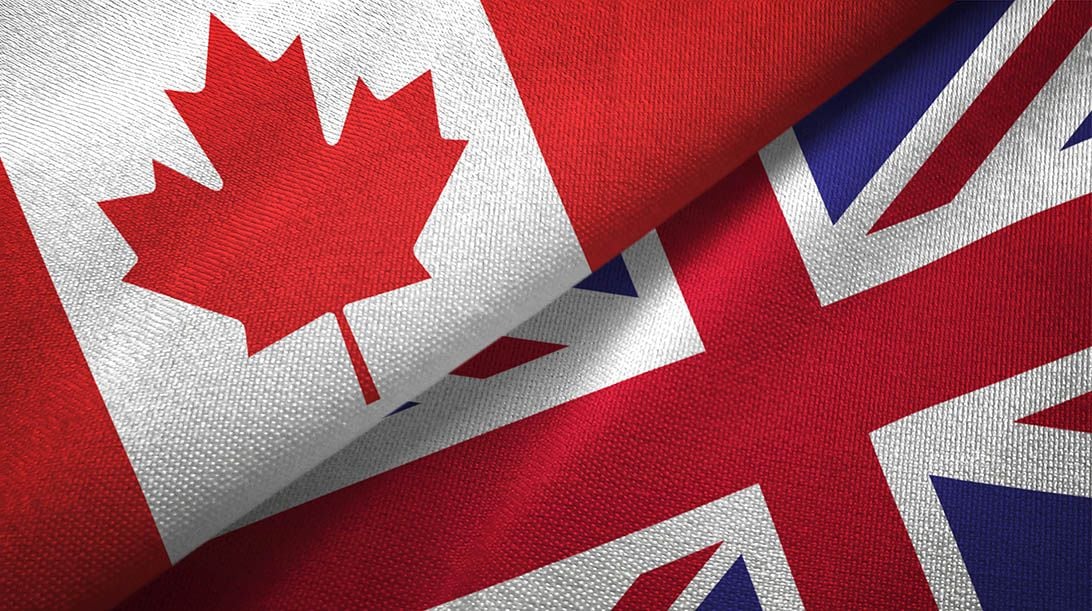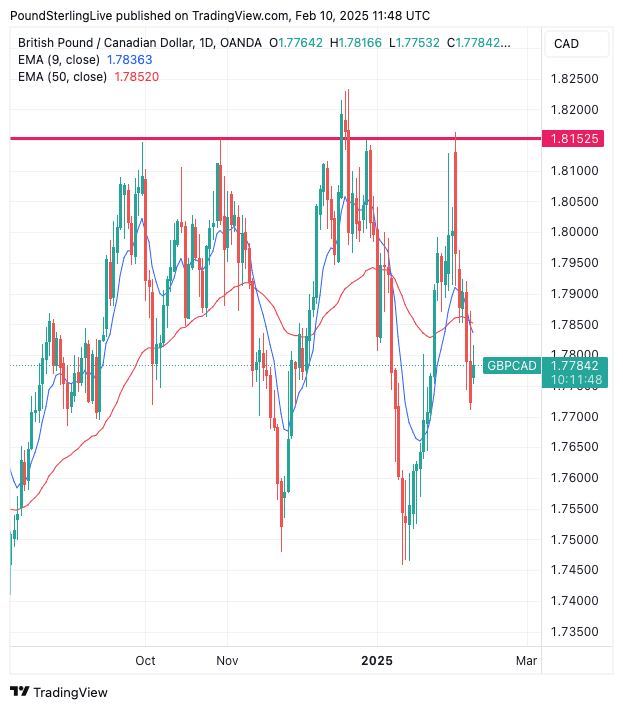
Image © Adobe Stock
Last week's strength in the Canadian Dollar can be described as a relief rebound, but the move is reaching its limits.
U.S. President Donald Trump delayed tariffs on Canada and Mexico in order to allow for negotiations to commence, triggering a rise in the value of the Canadian Dollar.
The Pound-to-Canadian Dollar exchange rate (GBPCAD) reflected this by registering a 1.54% weekly decline as it fell from a high of 1.8163 to close out at 1.7728.
Monday sees the pair rise to 1.7790 as that selloff fades and traders refocus on the risks facing CAD.
These risks were highlighted by Sunday's announcement by the U.S. to impose a 25% import tariff on steel and aluminium. Given that Canada exports aluminium to the U.S., this decision is a negative for CAD.
Trump said further unspecified tariffs would be announced later in the week, confirming that the tariff train is rumbling on and reminding us why the CAD faces fundamental headwinds.
All this creates scope for GBPCAD to find its feet in the coming days.
"Dollar bloc currencies including CAD, AUD and NZD, and the EUR are in the firing line, following the decline in short term bond yields vs the US as investors pare back growth expectations," says Kit Juckes, an analyst at Société Générale.
"The Yen and GBP outperform in G10," he adds.
Although fundamentals are poised to favour GBPCAD upside, the technicals etched onto the daily chart remind us that the pair is at risk of further declines.
Above: GBPCAD at daily intervals.
The exchange rate is below the 9-day and 50-day exponential moving averages, and we would want to see a move above here before we call a rebound.
If anything, the charts are telling us to expect a decline down to 1.7712 (last week's low) and then an eventual move to the November 2024 and January lows at 1.7479.
Sterling's recent setback against the Canadian Dollar also has a lot to do with last week's Bank of England decision to cut interest rates by 25 basis points and signal it was not yet done.
GBP losses reflect expectations in some corners of the market that the Bank could, in fact, be inclined to accelerate the pace of its cuts.
However, we wrote at the time that the weakness would be temporary as the Bank would be severely curtailed by the UK's inflation dynamics, which saw the Bank aggressively raise its inflation forecasts to a peak of 3.7% later in the year.
The realisation that the Bank is severely curtailed in its ambitions should ultimately bolster GBP.
Risks to the currency come in the form of a slew of speeches from Bank of England policy setters Andrew Bailey, Catherine Mann and Megan Green, who should shed further light on last week's decision. We will be watching for any market-moving soundbites.
The bigger risk to GBP comes on Thursday when Q4 GDP data is released, and a -0.1% q/q reading is confirmed.
This would mean the economy has shrunk since Labour took office, posing difficult decisions for the UK's Chancellor Rachel Reeves who might need to raise taxes again later this year to ensure she meets her goal of shrinking debt as a percentage of GDP by the end of the parliament.
An unexpectedly larger fall would result in a weaker Pound that could put GBPCAD under renewed pressure.

